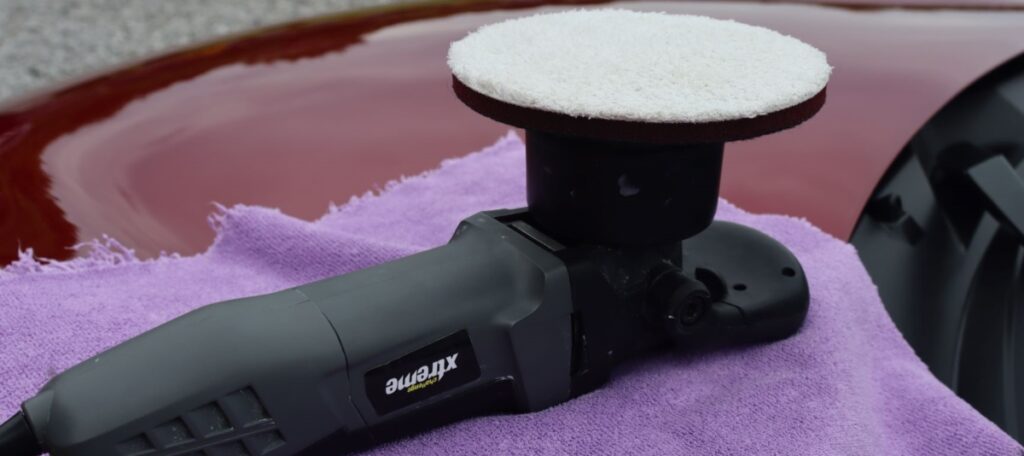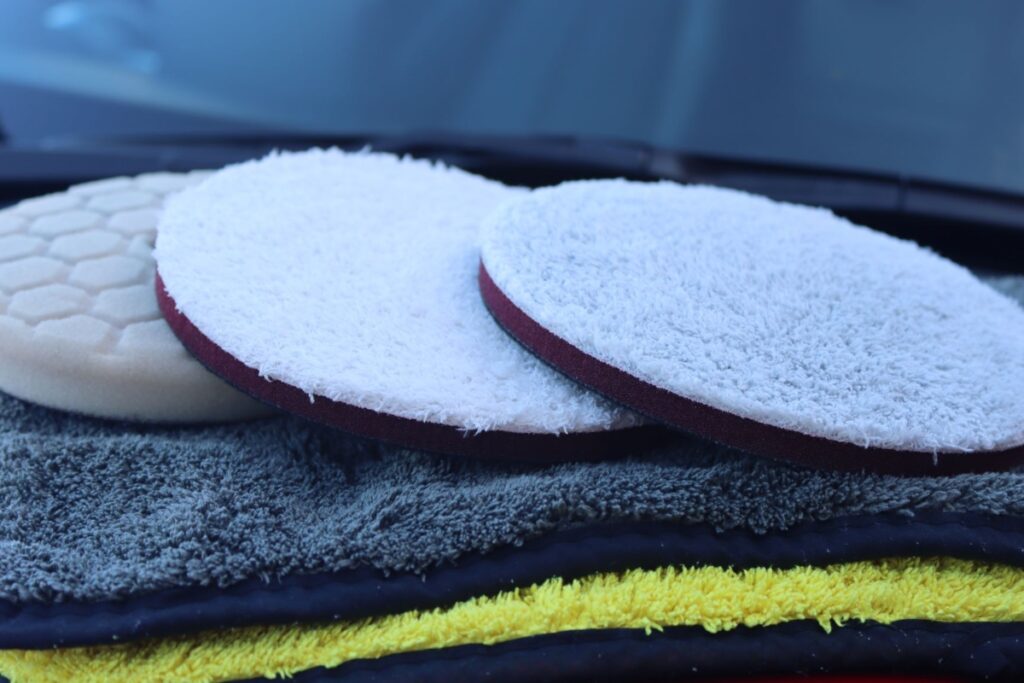Polishing a car is the only way to remove clear coat scratches and swirl marks permanently, by removing a layer of paint. There are two techniques you can use to do this: hand polishing and machine polishing. But which is the best option?
In this article, I’ll be directly comparing the pros and cons of hand and machine polishing so you can decide which is the best option.
Hand vs Machine Polishing
Machine polishing is faster and less labour intensive than hand polishing and also yields better results in terms of defect removal in the car’s paintwork. The advantages of hand polishing are that it makes it easier to access more intricate areas and it’s less aggressive and consequently, less risky.
| Hand Polishing | Machine Polishing |
| Slow and labour intensive | More efficient process |
| Good for accessing intricate areas | Better for large sections |
| Less risk of removing too much paint | More risk of removing too much paint |
| Suitable for very light defects | More consistent finish and best for deeper defects |
| Cheaper to get started | More expensive equipment is required |

Time and Effort
The main advantage of machine polishing a car instead of hand polishing it is that it is much faster and less labour intensive.
If you find a good polish and pad combination to suit the paintwork, it’s possible to machine polish an average-sized car in just a few hours and get great results. Hand polishing can take about 10x longer than this if you are doing a whole vehicle which isn’t really viable.
The other big issue is that hand polishing is very exhausting. You need to put a lot of effort in to apply some pressure and move the pad very quickly in order to cut away the paint. This means you’ll probably be pretty tired after each panel and need to take more breaks.
Machine polishing is still fairly tiring considering the machines weigh around 2-3 kg so polishing the side panels in particular requires more effort to keep it held up. However, it’s nowhere near as tiring as hand polishing.

Polishing Intricate Areas
For polishing intricate areas for example around the badges, hand polishing is a good option as it allows you to be a bit more precise and access these areas more easily.
It is possible to get smaller machine polishers with 1″ pads which give you great access to intricate areas, but most machines typically work with 3-6″ pads which make it difficult to polish these kinds of areas.
It can also be a bit difficult if you are using a fairly bulky polisher which doesn’t give you great access.
Hence, a lot of people prefer to use a machine polisher for the bulk of the car as it’s much more efficient, and then hand polish some more intricate areas.
Clear Coat Thickness and Sensitivity
Polishing a car doesn’t come without risks. Polishing by hand or by machine has the same effect, it removes a layer of the clear coat paint. Hence, you can’t overdo it otherwise you’ll run out of clear coat.
Hand polishing is considered safer than machine polishing because the rate at which the paint is cut away is slower. Hence, there’s less risk of the operator removing too much paint. This makes hand polishing a good option for older cars.
Machine polishing cuts away the paint much more quickly. There are two main types of polishers: dual-action and rotary.
Dual-action polishers generate less heat and cut the paint more slowly so are the safer option, whereas rotary polishers are more aggressive but also more efficient. Check out my in-depth comparison between rotary and DA polishers to learn more.
In order to reduce the risk of removing too much paint, you can use a paint depth gauge will gives you an indication as to how thick the car’s paintwork is. This gives the operator more information to decide if it’s safe to either machine or hand polish the vehicle.
The Results
Machine polishing yields better results compared to hand polishing in terms of defect removal. Machine polishers are better at removing deeper defects because the process is more efficient.
Polishing via a machine also gives a more consistent finish. No matter how hard you try, when you hand polish you’ll likely remove more paint from some areas than others and hence the finish will not be as consistent and visually appealing.
With that said, you can still get great looking paintwork with hand polishing if the defects are not too heavy. It’s fine to take this approach to remove some light swirl marks, but any heavier scratches will be very difficult to remove.
Check out this great YouTube video from Apex Detail to see the kind of results you can expect from hand and machine polishing.
Cost of Equipment
It’s much cheaper to get started hand polishing a car compared to machine polishing.
No matter what technique you’re using you’ll need the following equipment:
- Polish pad
- Polish/ compound liquid
- Microfiber cloths
- Inspection light
- Panel wipe solution (to remove polishing oils)
When you machine polish a car you’ll also need either a dual-action or rotary machine polisher. These typically cost around upwards of $100 (or £100 in the UK).
Check out my complete polishing checklist to learn all about the equipment you’ll need for each method.

